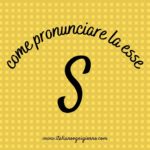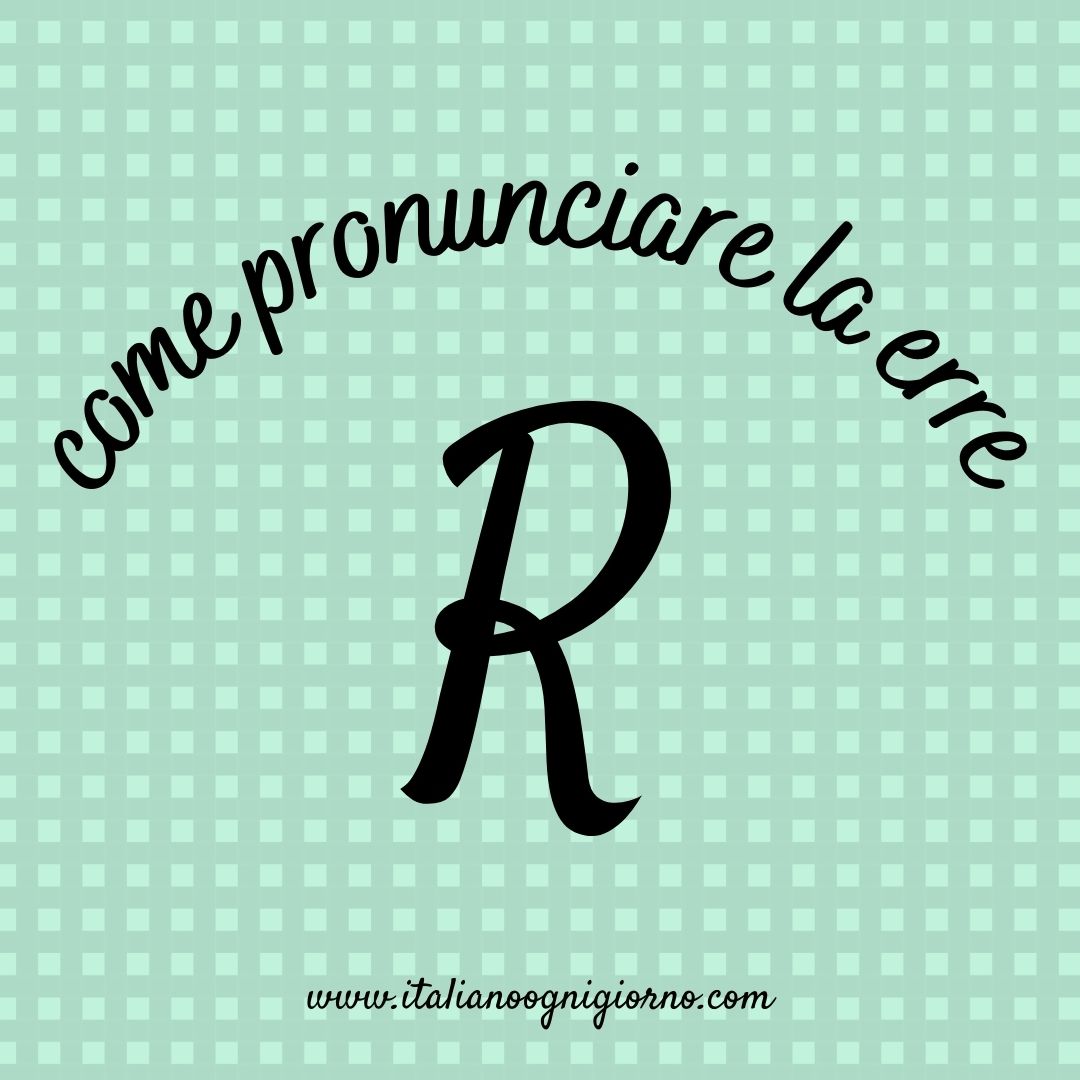Parliamo della famosa erre (R). È una delle lettere più difficili da pronunciare non solo per studenti stranieri, ma anche per i madrelingua. Infatti non tutti vibrano la “R” allo stesso modo.
I diversi modi di pronunciare la “R” dipendono da fattori interni, la “r moscia”, o anche esterni, per esempio i dialetti regionali e il sistema fonetico di altre lingue che richiedono l’uso di un’altra parte della bocca o della lingua. In inglese britannico per esempio è un suono approssimativo, mentre in italiano è un trillo come anche in americano. Infatti nelle parole butter, better (la R e’ un trillo).
La R moscia, nota anche come “erre francese”, è un modo di articolare la “R”, che invece di essere vibrata nella parte anteriore della bocca si fa vibrare nella parte posteriore.
Proviamo per esempio a dire “Rosa” prima vibrando la parte posteriore, R moscia, e poi la parte anteriore, trillo.
In italiano la lettera “R” è definita una vibrante alveolare, il che significa che per produrre il suono corretto la punta della lingua deve vibrare. La lingua si muove con la erre trillata e non è nella gola come la “R” francese.
Inoltre, in base alla posizione della “R” nella parola otteniamo suoni diversi:
- la “erre leggera” – come nella parola “TRE” dove il suono non è forte perché si trova tra una vocale e una consonante; oppure quando si trova tra due vocali per esempio nella parola “AMORE”.
- il “trillo lungo” – come nella parola “CARRO” poiché abbiamo una doppia erre; oppure all’inizio della parola come in “riso”. In questi due casi si tende a enfatizzare la “R”, producendo così un suono vibrante.
Comunque alcune persone pronunciano la “R” trillata in entrambi i casi e quindi “tre” e “riso” sono pronunciati con la “R” trillata.
ESERCIZI
Se si vuole cambiare la pronuncia della “R” basta fare degli esercizi regolarmente. Vediamone alcuni.
- Un primo esercizio utilizza la lettera “L” un suono lungo con la lingua dietro i denti. Ripetiamo velocemente “TLA” mettendo la lingua tra i denti anteriori:
TLA TLA TLA TLA TLA TLA TLA TLA
Più velocemente si ripete più si sente una “R” vibrante.
Facciamo lo stesso con tutte le vocali.
TLE TLE TLE TLE TLE TLE TLE TLE
TLI TLI TLI TLI TLI TLI TLI TLI
TLO TLO TLO TLO TLO TLO TLO TLO
TLU TLU TLU TLU TLU TLU TLU TLU
2. Facciamo un altro esercizio con la lettera “D”. La punta della lingua è dietro ai denti e bisogna molto velocemente ripetere la D insieme alle vocali.…
DaDaDaDaDaDaDaDaDaDaDaDa
Viene molto bene con la “e”
DeDeDeDeDeDeDeDeDeDeDeDe
DiDiDiDiDiDiDiDiDiDiDiDiDiDiDiDi
DoDoDoDoDoDoDoDoDoDoDoDo
DuDuDuDuDuDuDuDuDuDuDuDu
Adesso ripetiamo “DRE” molto velocemente…..e magicamente diventa “TRE” con un bel trillo della “R”.
DRE DRE DRE DRE DRE DRE DRE
3. E poi ci sono gli scioglilingua, un altro ottimo esercizio per migliorare il suono della “R”
Ripetiamo i seguenti 3 scioglilingua molto conosciuti per pronunciare la R.
- “Trentatré trentini entrarono a Trento tutti e trentatré trotterellando.”.
- “Tre tigri contro tre tigri”.
- “Un ramarro sul muro marrone”.
Prova a ripetere ciascuno molte volte aumentando la velocità, ma mantenendo una buona forma di pronuncia.
Quando si pronunciano con regolarità gli scioglilingua e gli altri esercizi la coordinazione della lingua diventa un gesto naturale.
—————————————————-
(English version)
Let’s talk about the famous Italian R sound. It is one of the most difficult letters to pronounce not only for foreign students, but also for native speakers. In fact, not everyone vibrates the “R” in the same way.
The different ways of pronouncing the “R” depend on internal factors, the “r moscia” (dull R) or even external, regional dialects, but also the phonetic system of other languages that requires the use of another part of the mouth or tongue. In British English, for example, it is an approximate sound, while in Italian it is a trill as well as in American. In fact, in the words butter, better (the R is a trill)
The R moscia, also known as “French R”, is a way of articulating the “R”, which instead of being vibrated in the front part of the mouth is vibrated in the back.
For example, let’s try to say “Rosa” by vibrating the back first, R moscia, and then the front part, trill.
In Italian the letter “R” is defined as a vibrating alveolar, which means that to produce the correct sound the tip of the tongue must vibrate. The tongue moves with the trilled r, it is not in the throat like the French “R”.
Also based on the position of the “R” in the word you get different sounds:
Light R – as in the word “TRE” where the sound is not strong because the “R” is located between a vowel and a consonant; or when it is found between two vowels, for example in the word “AMORE”.
Long trill – as in the word “CARRO” because there’s a double “R”; or at the beginning of the word as in “RISO”. In these two cases we tend to emphasize the “R”, thus producing a vibrant sound.
However, some people pronounce the trilled “R” in both cases and therefore “TRE” and “RISO” are pronounced with the trilled “R”.
If you want to change the pronunciation of the “R” just do some exercises regularly. Let’s see some of them.
A first exercise uses the letter “L” a long sound with the tongue behind the teeth. We’ll quickly repeat “TLA” putting the tongue between the front teeth:
TLA TLA TLA TLA TLA TLA TLA TLA
The faster you repeat the more a vibrant “R” is.
We do the same with all vowels.
TLE TLE TLE TLE TLE TLE TLE TLE
TLI TLI TLI TLI TLI TLI TLI
TLO TLO TLO TLO TLO TLO TLO TLO
TLU TLU TLU TLU TLU TLU TLU TLU
Let’s do another exercise with the letter “D”. The tip of the tongue is behind the teeth and you have to repeat it very quickly together with the vowels. …
DaDaDaDaDaDaDaDaDaDa
It works very well with the “e”
DeDeDeDeDeDeDeDeDeDeDeDe
DoDoDoDoDoDoDoDoDoDoDoDoDo
DuDuDuDuDuDuDuDuDuDuDuDu
Now let’s repeat “DRE” very quickly… ..and magically it becomes “TRE” with a nice roll of the “R”.
And also the tongue twisters are another great exercise to improve the sound of the “R”
Let’s repeat the following 3 well-known tongue twisters for pronouncing the “R”.
- “Trentatré trentini entrarono a Trento tutti e trentatré trotterellando.”.
- “Tre tigri contro tre tigri”.
- “Un ramarro sul muro marrone”.
Try repeating each several times while increasing the speed, but maintaining a good form of pronunciation.
When tongue twisters and the other exercises are pronounced regularly, tongue coordination becomes a natural gesture.
- 10 idee per studiare italiano in estate o in vacanza

- 12 Italian phrases to live better | Italian pronunciation

- 25 verbi riflessivi in italiano

- 3 ways to pronounce the s in Italian

- 32 frasi ipotetiche del primo tipo in italiano

- 32 frasi ipotetiche del secondo tipo in italiano

- 5 Italian listening activities | 5 attività per l’ascolto e la pronuncia

- 60 verbi italiani per viaggiare #1

- 60 verbi italiani per viaggiare #2


